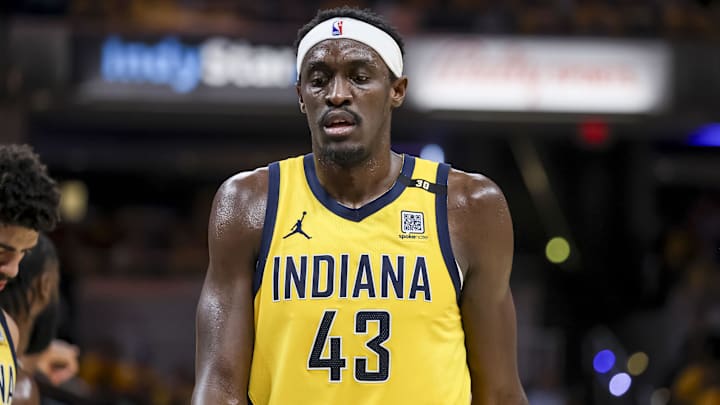New NBA Rule Allows Free Agency to Start Early for Certain Players

In this story:
This upcoming NBA offseason will be a little different than in year's past, as the new Collective Bargaining Agreement between the league and the NBAPA kicks in. In particular, one key date is rapidly approaching and represents a significant free agency change that may surprise fans.
What is this new rule?
New NBA Free Agency Rule
Per the CBA, teams may negotiate with their own upcoming free agents the day after the final game of the NBA Finals. This is notable because, previously, teams were prevented from beginning those negotiations until the "moratorium" period of free agency, when all impending free agents were permitted to begin negotiations with interested parties.
In short, this means NBA teams now get a brand-new, exclusive negotiating window with their own free agents. The length of that window is entirely determined by the NBA Finals, but it ends on June 30— which is also when teams can begin to negotiate with other free agents.
For example, Golden State Warriors superstar Klay Thompson is coming onto free agency for the first time in his career and is the biggest name on the market. If the Boston Celtics beat the Dallas Mavericks on Monday night, the Warriors can start negotiating with Thompson on Tuesday. But Thompson cannot negotiate with other teams until June 30. In this case, Golden State would get nearly a two-week head start on negotiations with Thompson because they are attempting to retain him.
Similarly, the Indiana Pacers hope to retain Pascal Siakam after trading multiple draft picks for him at the deadline this season. Whenever the Celtics beat the Mavericks is when they can reach out to Siakam and start hammering out a deal. It could end up being a crucial extra days for a team like Indiana, attempting to retain a player acquired who is far from a guarantee to stick around.
It remains to be seen how the new rule will affect the pool of available players. Will the extended allotment of negotiation time lead to quicker deals being struck and less player movement, or will it sour relations between team and player with enough runway for both sides to prepare for a divorce?
It's anybody's guess, but the one thing it will do is keep the spotlight on the NBA. In past years the time between the end of the Finals and the NBA Draft (effectively the start of the offseason news cycle) was a dead zone, especially when the Finals would end early. Few free agency rumors caught much traction because the league would come down hard on any hint of tampering. Now, however, there's a span of at least a week (if not more) where all attention is dedicated to teams' efforts to re-sign their own players.
Not everyone can be the NFL with its dominant 24/7/365 news cycle, but the NBA is doing its best with this new rule.

Liam McKeone is a senior writer for the Breaking and Trending News team at Sports Illustrated. He has been in the industry as a content creator since 2017, and prior to joining SI in May 2024, McKeone worked for NBC Sports Boston and The Big Lead. In addition to his work as a writer, he has hosted the Press Pass Podcast covering sports media and The Big Stream covering pop culture. A graduate of Fordham University, he is always up for a good debate and enjoys loudly arguing about sports, rap music, books and video games. McKeone has been a member of the National Sports Media Association since 2020.
Follow liam_mckeone